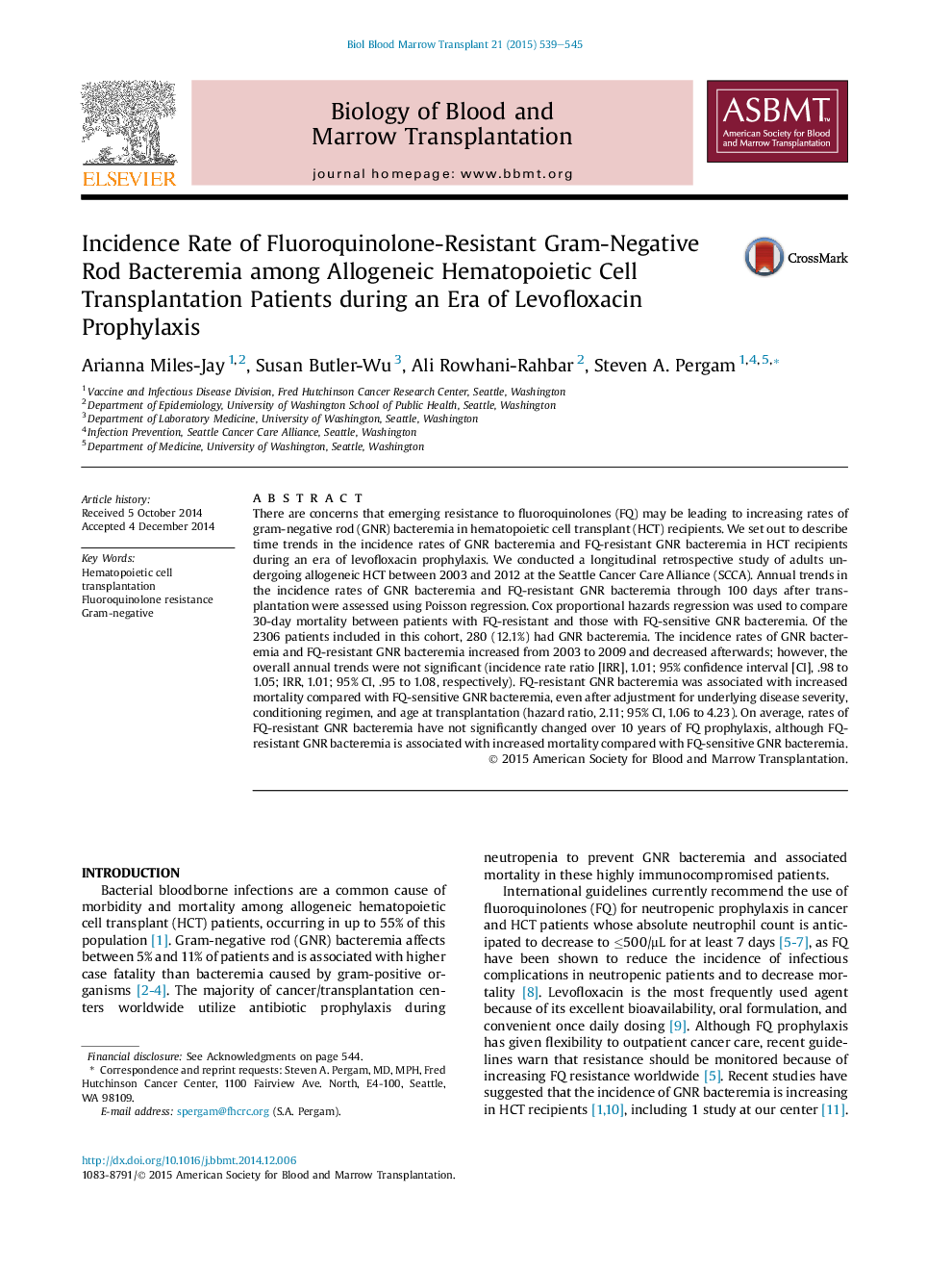| کد مقاله | کد نشریه | سال انتشار | مقاله انگلیسی | نسخه تمام متن |
|---|---|---|---|---|
| 2101527 | 1546269 | 2015 | 7 صفحه PDF | دانلود رایگان |
Gram-negative rod in transplantation highlights
• We examined gram-negative rod bacteremia during 10 years of fluoroquinolone prophylaxis in hematopoietic cell transplant recipients
• Incidence of fluoroquinolone-resistant gram-negative rod bacteremia did not significantly change over time
• Bacteremia caused by fluoroquinolone-resistant gram-negative rods were associated with higher mortality
• Centers should monitor rates of fluoroquinolone resistance in populations with high fluoroquinolone exposure
There are concerns that emerging resistance to fluoroquinolones (FQ) may be leading to increasing rates of gram-negative rod (GNR) bacteremia in hematopoietic cell transplant (HCT) recipients. We set out to describe time trends in the incidence rates of GNR bacteremia and FQ-resistant GNR bacteremia in HCT recipients during an era of levofloxacin prophylaxis. We conducted a longitudinal retrospective study of adults undergoing allogeneic HCT between 2003 and 2012 at the Seattle Cancer Care Alliance (SCCA). Annual trends in the incidence rates of GNR bacteremia and FQ-resistant GNR bacteremia through 100 days after transplantation were assessed using Poisson regression. Cox proportional hazards regression was used to compare 30-day mortality between patients with FQ-resistant and those with FQ-sensitive GNR bacteremia. Of the 2306 patients included in this cohort, 280 (12.1%) had GNR bacteremia. The incidence rates of GNR bacteremia and FQ-resistant GNR bacteremia increased from 2003 to 2009 and decreased afterwards; however, the overall annual trends were not significant (incidence rate ratio [IRR], 1.01; 95% confidence interval [CI], .98 to 1.05; IRR, 1.01; 95% CI, .95 to 1.08, respectively). FQ-resistant GNR bacteremia was associated with increased mortality compared with FQ-sensitive GNR bacteremia, even after adjustment for underlying disease severity, conditioning regimen, and age at transplantation (hazard ratio, 2.11; 95% CI, 1.06 to 4.23). On average, rates of FQ-resistant GNR bacteremia have not significantly changed over 10 years of FQ prophylaxis, although FQ-resistant GNR bacteremia is associated with increased mortality compared with FQ-sensitive GNR bacteremia.
Journal: - Volume 21, Issue 3, March 2015, Pages 539–545
